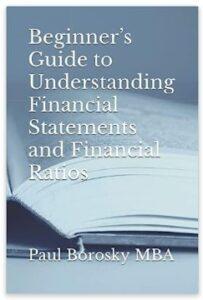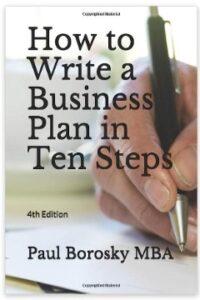How to Write a Tiny House Business Plan and Template
The tiny house-building industry has emerged as a relatively new and thriving concept. Merely five years ago, tiny houses were perceived as RVs or truck campers, but today, the demand for these compact dwellings seems boundless.
Several factors contribute to this phenomenon, with affordability being a key driver. Research conducted by our tiny house business plan writer reveals that these homes can be acquired for under $8,000, a mere fraction of the cost of a traditional new home. Moreover, the convenience of constructing tiny houses in factories or other locations and their cost-effective delivery to various homesites across America further enhances their appeal.

The unexpected surge in the tiny house market creates a remarkable opportunity for entrepreneurs seeking to capitalize on this trend. To support these aspiring tiny home business owners, our dedicated tiny home business plan writer has compiled invaluable tips and tricks for crafting a professional and comprehensive tiny home business plan. We offer a readily available tiny house business plan template to streamline the planning process and help entrepreneurs seize this promising market (7/23).
CLICK HERE TO CHECK OUT OUR TINY HOME BUSINESS PLAN TEMPLATE!!
Executive Summary for a Tiny House Business Plan
When developing the executive summary for a tiny house business plan, it is essential to cover specific components that offer a comprehensive overview. Our business plan writer suggests incorporating the following elements: discussing the range of sizes available for the tiny houses, highlighting unique features and design options, clarifying whether the business will focus on developing communities or individual sites, explaining the advantages and market potential of the chosen business structure; specifying the construction approach, whether on-site or off-site manufacturing, and outlining the associated benefits and cost-efficiency; and summarizing the anticipated startup costs, encompassing expenses like land acquisition, construction, permits, and marketing. This comprehensive approach allows tiny house business owners to depict their operations and expected financial outcomes in the executive summary, enabling readers to understand the essence of the business plan and make informed decisions regarding investment or collaboration opportunities.
Need Help Writing a TINY HOME Business Plan?
Call or Text Paul, Doctoral Candidate, MBA.
321-948-9588
Email: Paulb@QualityBusinessPlan.com
Click HERE to Contact US Today!!!
Company Information and Location.
In the company information and location section of a tiny home business plan, it is crucial to provide a comprehensive explanation of the organization’s services or products about tiny homes. This section should clearly outline the specific role and offerings of the company within the tiny home industry. For instance, some organizations may focus on constructing or installing prefabricated tiny homes, showcasing their expertise in delivering ready-to-use housing solutions. Others may specialize in transportation services, providing efficient and reliable means of moving tiny homes to desired locations. Additionally, organizations may excel in services related to decorating and optimizing the limited space within tiny homes, catering to homeowners’ unique needs and preferences. Whichever segment the company operates in, it is essential to explicitly state its specialization and offerings within the company information and location section of the business plan (7/23).
Service Description and Competitive Advantages.

When developing the competitive advantage section of your tiny home business plan or template, it is essential to start by identifying your competition. Depending on the location, your competition may consist of local homebuilders, RV sellers, or module home dealers. Once you have identified your competitors, conduct thorough research to gather facts and statistics comparing the benefits of tiny homes with those of your direct competition.
For instance, if your competition primarily includes local homebuilders, you can highlight the competitive advantages of your tiny home business. These advantages may include the significantly lower cost of your product compared to traditional homes, making it more affordable and accessible to a broader market. Additionally, emphasize the transportability aspect of your tiny homes, as this feature may appeal to potential buyers who value flexibility and the ability to move their homes to different locations.
While stating your competitive advantage, explaining why it is essential for your company is crucial. This discussion allows you to highlight the specific benefits that set your business apart and address the needs and preferences of your target market. By clearly articulating the value and significance of your competitive advantage, you can demonstrate the unique selling points of your tiny home business and differentiate yourself from the competition in the eyes of potential investors and stakeholders.
Target Market for a Tiny House Business Plan or Template
The target market for a tiny house business plan or template continuously expands, with new demographics emerging regularly. While previously, the target market primarily consisted of environmentally conscious individuals or couples seeking to reduce their carbon footprint, it has now evolved to include a broader range of potential customers. Today, your target market for a tiny home could encompass college students, cost-conscious buyers, and individuals or couples looking for the flexibility to relocate their homes periodically due to work or travel needs.
Given the diverse demographics of individuals and couples interested in purchasing tiny homes, there may be multiple target markets to consider. This opens up opportunities for your organization to tailor its offerings and align with niche market segments. You can develop unique value propositions and marketing strategies to appeal to these distinct customer groups by identifying and understanding different target markets’ specific needs and desires.
As the tiny house movement continues to gain popularity, it is crucial to regularly assess and adapt to the evolving target market. Staying attuned to emerging trends and preferences will enable your business to stay competitive and capitalize on niche market opportunities that align with your organization’s strengths and capabilities.
Industry research for a Tiny House Business Plan Template.

Industry and market statistics for tiny homes are relatively scarce. However, some quality sites provide tiny home statistics that may be reliable. For example, iproperty management has done some seemingly good research on the benefits of owning tiny homes. On their site, the organization noted that New York City leads the country in the tiny home-share market. A close second would be San Francisco and San Diego. Also, Los Angeles ranks in the top five for tiny home sales. Just from the statistics, an argument may be made that the West Coast, specifically California, could be ready to lead the country in tiny home sales. This is just one source to establish a foundation for tiny home builders and a supporting cast.
Owner and Management Section
A tiny home business plan’s owner and management section should start with insights into why the owner wishes to enter the tiny home industry. Our tiny home business plan writer has found that some entrepreneurs wish to enter the market because of their personal experiences with tiny home living. Other entrepreneurs have significant construction experience and wish to exploit niche opportunities in the construction marketplace. Start the section with a brief explanation, regardless of your passion or drive to enter the industry.
Funding Request for a Tiny House Business Plan
The funding request section for a tiny house business plan should start with stating the dollar amount needed to start your business. Once a dollar amount needed to start your tiny house organization is identified, follow up this specific amount with categories showing how the funds will be divvied up. For example, if your organization builds tiny houses, common categories may include working capital, construction equipment, advertising, budget for purchasing land, building materials, and other relevant costs. Once these categories are identified in dollar amounts allocated, show the total for startup costs at the bottom of the bulleted list. Also, ensure the total amount needed for startup operations is the same as the top-line dollar amount. In doing this, tiny home entrepreneurs can show explicitly the dollar amount needed to start the organization upfront. However, by breaking the funding into categories, the business owner can have some wiggle room and startup cost allocation.
Financials and Pro Forma Financial Projections for a Tiny House Business Plan.
The pro forma financial projection section for a tiny house business plan template or pro forma financials should start with identifying when the first home sale will occur. Once this is done, use the variable cost section of your financial model to include land purchases, impact fees, and subcontractor costs. Next, your financial model for your financial projections should list your various fixed costs that will be paid monthly, like executive wages, advertising, utilities, office expenses, smartphone bills, and other prevalent monthly wages. Once your fixed costs are identified, deduct this from your gross profit margins, simply your variable cost subtracted from your revenues. This number will give you your estimated monthly profits for your tiny house business. It’s a pretty simple process but an excellent starting point for your financial projections.
Hopefully, these insightful tips and tricks for writing a business plan were helpful. Email or call us for help with a business plan or financial projections.
Author: Paul Borosky, Doctoral Candidate, MBA., Author
Owner of: Quality Business Plan and Quality Business Consultant.
Updated: 7/2/2023